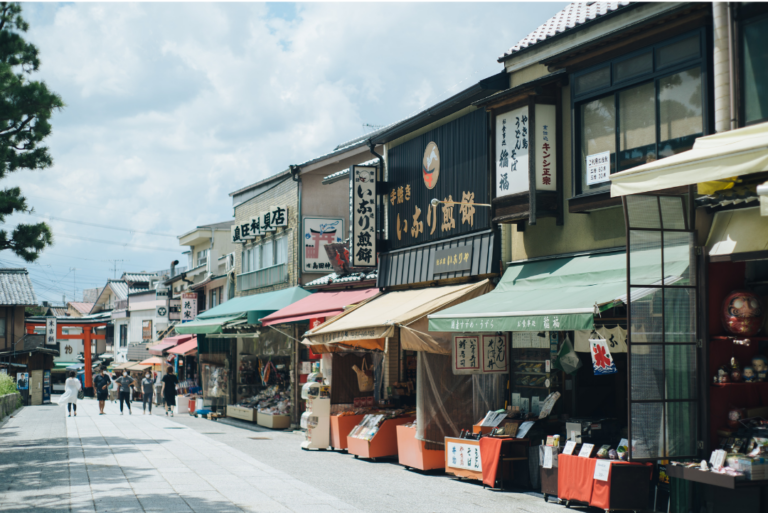Transparency in Japanese Consumer Trust: What Global Brands Need to Know

In Japan, consumer trust is essential in developing brand loyalty. One of the keys to developing brand trust is transparency. Japanese consumers seek out brands that are reliable, honest, and ethical in their business practices. This transparency goes further than clarity and communication but even to corporate responsibilities and brand authenticity. Failure to be transparent can affect brand trust, your reputation, and ultimately, sales. These practices don’t only apply to Japanese brands but to global brands as well, as we will discover.
In this blog post, we will explore the cultural behaviors that influence transparency, talk about transparency methods and successes, where transparency failed, and finally some tips for global brands looking to level up their business in Japan.
Cultural Significance of Transparency

Risk-Aversion
One of the core concepts of Japanese consumer behavior is that they are risk-averse. This means that they tend to conduct extensive research before committing to a purchase and to a brand. As a result, there is also an expectation for detailed information about the product or service, clear communication from the brand, and company integrity.
This can be seen by the popularity of Japan’s leading price comparison website, Kakaku.com. With about 93 million monthly active users, more than half the population, it reflects the importance of transparency in pricing, product specifications, and customer reviews.
Shinyō
Another important reason for transparency is it develops trust. In Japanese the word for trustworthiness is Shinyō (信用). Not only does it mean trustworthiness but it also means credibility. You want to put a lot of work into developing trust with your consumers and being transparent is one of those tools. Once that trust is earned, and your brand is healthy in the eyes of the consumers, they will be loyal to the brand and be repeat buyers. However, if that trust is lost, it will be extremely difficult to earn that trust again.
Meiwaku
The last concept to understand is Meiwaku. Meiwaku (迷惑) translates to cause trouble, inconvenience, or annoyance. It may seem like something minor initially until you realize that Japan emphasizes social harmony and responsibility. This again means that brands need to be very clear about what they are selling or how they operate. Brands must avoid making misleading claims, false advertising, or deceptive marketing tactics. These tactics can break the perceived harmony leading to severe backlash from consumers and will destroy your brand image.
Where Transparency and Brand Trust Meet

Product Labels and Ingredients
As I mentioned above, there is an expectation for clear and detailed product information. This can range from the ingredients to the origins and even its manufacturing processes. Many brands will even double down on these attributes, and use them as selling points. For example, they may emphasize that is natural, organic, or ethically sourced.
A great example of a company that does this is Shiseido. Shiseido is very transparent in their communication and provides very detailed ingredient lists. It constantly invests in dermatological research and publishes its findings. It then uses this information in its educational content to teach about the science of skincare. This transparency on its ingredients and the research it does has led it to be a brand that is trusted as a premium beauty care product.
Corporate Social Responsibility (CSR)
On a somewhat similar note, transparent ethical business practices are also rewarded by Japanese consumers. This can be being upfront about sustainability, fair labor and responsible sourcing. Companies that have successfully incorporated these practices, and implemented them into their brand, have gained stronger consumer loyalty.
Suntory is a great example of transparent sustainability. Suntory has a project called “Natural Water Sanctuary.” This project aims to protect over 12,000 hectares of forests, for water conservation. The company actively and openly shares its progress reports on its environmental impact on its website. This resonates with Japanese consumers and establishes them as a trustworthy and ethical brand.
Transparent Pricing
As I alluded to before, Japanese consumers want to know what they are paying for. This means things like hidden fees or unclear pricing systems will cause distrust in your brand. For foreign brands that increase payments on future recontracting, you need to tell them. This is so ingrained in Japanese society, that anywhere you are purchasing a good or service, it has the tax included in the pricing. This clarity is essential.
A brand that does this well is Muji. Muji rarely offers discounts or promotions. That is because they operate on a fair-pricing all-year-round system. They do this by being transparent about how, what, and why the product is priced the way it is. They will state how the price reflects material costs, when and how they eliminate wasteful packaging, or when they are directly sourcing from manufacturers just to name a few. They even announced in 2020 that they had reduced pricing on 200 items because of improvements in production efficiency, all without sacrificing quality they claim. Muji is a powerful and successful brand in Japan, and it does it by being as open and transparent as possible.
Customer Service & Complaints
It is not a surprise that delivering excellent customer service is essential. As I have talked about elsewhere, hospitality or omotenashi is built into the culture. This is also true when complaints and issues arise. When this issue arises, it is critical that you are quick, honest, respectful, and proactive in responding to these arising issues. If you delay or deliver unclear responses, you will permanently destroy your brand’s reputation.
One of the best at this is Toyota. Toyota since its 2009-2010 recall crisis where it had to recall over 8 million of its cars, has invested a lot into its customer service to restore trust with its consumers. It has a policy of its executives quickly coming out and apologizing and answering questions online for any issues that occur. It has also extended its efforts to reaching out directly to dealerships, and providing customer service training, and ensuring they understand how their policies for recalls work. They also have a very strict safety and quality assurance measure in place before launching a product. They have created a very transparent crisis management and customer service system that has allowed them to remain at the top of the automobile industry.
Where lack of transparency leads to failure

Olympus Scandal 2011
A great example of a lack of transparency was the Olympus scandal of 2011 which was not only a massive controversy in Japan but around the world.
It revolved around CEO Tsuyoshi Kikukawa committing massive accounting fraud, where they attempted to hide $1.7 billion in losses. During this time articles began to come out that they were hiding irregular payments and even led the media to believe they were involved with the Yakuza, the Japanese version of the mafia.
Later Kikukawa helped promote Michael Woodford to the CEO, where he tried to pin all of it on him, causing even more drama around the issue. In the end, it was discovered that Kikukawa was behind the fraud.
It led to Olympus losing 80% of its stock market value, firing 7% of it workforce, closing 40 percent of its manufacturing plants, and paying hundreds of millions of dollars to the U.S. and millions to Woodford for defamation.
Needless to say this complete lack of transparency led to a loss of investor confidence, public distrust, and a lost of not only domestic reputation but global reputation. It hasn’t been able to fully recover from this scandal.
McDonald Food Safety Crisis 2014
Another example of a brand’s failure to communicate and address consumers’ concerns transparently was McDonalds in 2014.
This started out when it was discovered that a Chinese supplier of chicken was in breach of food safety standards. This led to chicken meat that was expired entering McDonald’s Japanese supply chain.
The initial response was slow and began with denials that it was happening. The lack of immediate and transparent communication to consumers caused a massive backlash.
The sales dropped by 25% alone in that month and continued to decline significantly in the subsequent months. This led to an global sales decrease of 3.7% and cost McDonald’s not only their brand image but cost them a loss of $17 billion that year.
Unlike, Olympus however, McDonalds was able to recover after rebuilding its transparency in where it was sourcing its food and increasing efforts to manage food safety measures. However, it is a testament to how critical it is to be transparent in crisis management.
Tips for Global Brands
1) Provide Detailed Product Information: Clearly explain ingredients, sources, and benefits. Don’t exaggerate or make vague claims.
2) Transparent and Fair Pricing Models: Always be straightforward with your pricing. Be transparent when it comes to final pricing, additional fees, shipping costs, and future increases in pricing. I have seen companies lose clients permanently for this.
3) Respond Quickly to Customer Concerns: It is essential during a crisis to communicate quickly, directly, and honestly. Look to create a crisis response strategy incorporating transparency and accountability.
4) Corporate Social Responsibility: Consumers appreciate ethical business practices and sustainability. Look to incorporate corporate responsibility campaigns that resonate with Japanese consumers.
For global brands looking to enter Japan, transparency isn’t optional- it’s life or death. Focus on honest marketing, corporate responsibility, and ethical business practices. You’ll build long-lasting customer trust and brand loyalty.
I hope you found this blog post insightful. If you would like to get the latest updates follow me on social media and sign up for my newsletter!
1 thought on “Transparency in Japanese Consumer Trust: What Global Brands Need to Know”
Comments are closed.
Pingback: Why Marketing Research is Essential in Understanding Japan’s Market